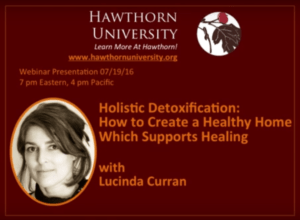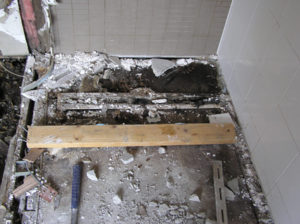Dehumidifiers – The Benefits of Using One Regularly
Let's first explore humidity – to set the scene and give context to the rest of this post.
What is Humidity?
Humidity is the amount of water vapour in the air. It is important to know and understand this, particularly if you have any water damage or you live in a humid environment.
Humidity is commonly measured and discussed in two ways.
Firstly, there is relative humidity – this is the one we hear about a lot. When you think of being somewhere tropical, where you feel clammy despite having just showered, these areas will have a high level of relative humidity. The level is given as a percentage, for example 62%.
Relative humidity is the measure of how much water vapour is in the air and varies according to the temperature, in that it is relative to the temperature. The warmer the air, the more water vapour can be held and thus the relative humidity level will be higher.
Specific humidity is a different measurement and does not vary with temperature. It is expressed as gpk (grams per kilogram) or gpp (grains per pound).
Ideal Levels of Humidity
There are no ideal levels for specific humidity. As a building biologist, the different readings in different rooms can show me where to look further for water damage, and this requires quite specialised equipment.
Relative humidity is the one that is easiest to measure and changes can be quite noticeable in the way it feels. This is the one more closely related to comfort. Relative humidity is easily measured using an inexpensive hygrometer, such as this one.
Most people generally feel comfortable when the temperature is between 18-24oC and the relative humidity is between 35-75%, beyond this people generally feel uncomfortable.
When relative humidity levels are high, the air is uncomfortably moist – you may feel hot and clammy, sticky or just damp.
When relative humidity levels are low, you may feel quite dry – dry eyes, dry throat, dry skin, “parched”; you may even experience more static electricity.
The optimum level for relative humidity is between 40-60%.
Bacteria, viruses, fungi and house dust mites all are less active; and these biological contaminants can be highly problematic for health, and form part of the microbial stew.

Occupant Activity and Humidity
Humidity can result in water damage.
In our homes, there are four main ways for water damage to occur. The first is a disaster of some sort, eg flooding. The second is damage to the building, eg a burst pipe, tiles coming off the roof, a leak. The third is poor building design or poor workmanship, such as not having an exterior vent on an extractor fan, having bedrooms with no opening windows, running the downpipes to the underneath of the house… And the fourth (which can often be overlooked) is occupant activity.
Occupant activity can cause a lot of water damage. Some examples are:
- not using the extractor fan when bathing
- using a clothes dryer
- spilling liquids and not cleaning them up quickly
Examples of Moisture Created from Occupant Activity
The following is from Elkink and Pringle's 2012 book Building Basics: Internal Moisture – and these levels, I am sure, will amaze you!
| Activity | Creates |
| Showering and bathing | Varying levels of moisture depending on temperature of shower, length of time, ventilation. |
| People in a room | Awake we exhale 200ml of water vapour per hour. Asleep we exhale 20ml per hour. This is roughly 3L of moisture per day. |
| Unflued gas heaters | 0.5-1L of water per hour. |
| Cooking | Varies depending on method (e.g. boiling and steaming), if the heat source is gas; and includes kettles, microwaves, dishwashers and washing dishes. |
| Clothes washing and drying | Up to 5L per load can be released if clothes are dried inside on a rack. |
| Wet tea towels, dish cloths, clothes, towels, bathmats | These can all increase humidity within a room. |
| Indoor spas, saunas and pools | All produce enough heat and water vapour to require additional mechanical ventilation systems. |
| Humidifiers | Increase the humidity in a room and can result in condensation. |
| Accidental floods | Overflowing baths, sinks and laundry tubs can all create problems if not dried within 24-48 hours. |
| Roof space ventilation | This is important particularly if extractor fans are flued into the roof cavity, and not vented externally. Changes in pressure can cause moisture and other contaminants to enter the building. |
| Steam cleaning | A potential problem is created if the materials are not completely dry within 24-48 hours. |
| Leaking pipes and appliances | A very large problem, which will vary depending on what, where, how much, and how long before it is rectified. |
| A normal subfloor | Evaporation from a 93m2 subfloor is 45L of moisture per day, and up to 180L per day if there is standing water on the subfloor soil. |
Ventilation
As you can see, there are a lot of ways that we can fill our homes with moisture – inadvertently, which is one reason why ventilation is important. My ideal would be for every home to exchange all of the air every few hours, and yet reality brings us back to at least once a day.
My favourite thing to do is to open windows and doors in the morning until I feel the temperature change, and I know that all of the air in my home has been exchanged.
I'll come back to this a little later, but it is important to note that moisture moves to where levels are lowest… So, if there is less humidity outside, then opening your windows can allow the moisture to dissipate out of your home. If the relative humidity is higher outside, then it could be better to open your windows and doors when this has changed over.
How to Use a Dehumidifier
A dehumidifier takes the water vapour out of the air and it can be used to bring relative humidity levels back into the optimum zone – between 40-60%.
I like people to have them, particularly when the cause of the moisture is occupant activity or a lack of ventilation (such as a rented property with no extractor fan in the bathroom).
Here is a general step-by-step guide for how to use a dehumidifier for the initial deep-drying. Please note that every house is different, so this is merely a guide.
- If you have pets, like birds, etc, please take them out of the room first.
- Close the windows and doors of the chosen room.
- Open cupboards and drawers in this room.
- Set your dehumidifier to 30% relative humidity.
- If temperature of the room is low, turn on the heater (or the heater on the dehumidifier) for optimum drying.
- Run the dehumidifier for 24-hours a day for 1-3 days.
A good dehumidifier will automatically turn itself off when its water tank reaches capacity – so you should be able to run it while you are at work (they are a bit noisy, so this is preferable to running them overnight).
After this initial drying phase, you can use it periodically to dry the room.
NOTE: If there is water damage and/or mould, I recommend that a) the source of the water is addressed and b) if anything is wet for more than 48 hours that the resultant mould be addressed first.

When Else a Dehumidifier is Useful
A dehumidifier, as mentioned is great for moisture caused by occupant activity.
- My #1 use for a dehumidifier, in an ongoing way, is to use it in the bathroom or ensuite when bathing. Despite using it regularly, it always astonishes me the amount of water vapour that a shower can produce.
- It can also be used when you are exchanging the air in your home, and the outside relative humidity is higher than the indoor relative humidity.
- If you get a good one, it will also have a heater on it. This is beneficial as you now have a clothes dryer – that doesn't add moisture to the air! Simple hang your clothes on a rack and run the dehumidifier nearby (wishing I had one when I lived in the Blue Mountains, where it took weeks to dry my laundry!)
Which One Do I Recommend?
I have sought out one that I like (I stock it for this reason) – I personally own this model and use it every day.
This is the New Wide Tech All Seasons 35L Dehumidifier.
Basically, bigger is better, it does the job more efficiently and has a greater water capacity.
What else to look for?
- variable humidity settings
- the water tank will automatically signal when it is full and the dehumidifier will stop working
- a ceramic heater to help dry more quickly and allow it to work well in cooler climates
- option for continuous drainage
When a Dehumidifier is Not Enough
As much as I am a fan of the dehumidifier (pun not intended) – there are times when one is not enough. My biggest concern with recommending them is that someone may have water damage to their property with resultant mould.
Mould spores are everywhere and just need water as the spark of life… anything that is wet for longer than 48-hours can be a problem – even if it is dry now.
Read more about mould here and mould, water damage and health here.
A dehumidifier is fabulous for occupant activity, but not ideal (without professional assessment) when there is something more going on, eg structural damage…
So, these factors would give you an indication that you should look beyond just drying out the room with a dehumidifier:
- You (or someone in your household) is unwell, and generally, your health improves when away from the home
- You have mould
- Your home (or parts of it) smell musty, mouldy, damp, dank or earthy
- Your clothes are always damp
- There is a history of water damage in your home
- You have a leak
- There is water under your house
Obviously, the above list does not cover everything. Mould is a serious problem, and it is a moisture issue. Addressing the source is paramount to resolving the issue.
Get in touch if you would like to discuss your situation.
(This post is intended to be informative, and not an infomercial. Given the gravity of biotoxin/mould-related illnesses, please understand that I do need to point out the limitations, and how you can action the situation.)
References
Aderholdt, J (3 August 2011) The Insulation Lab (Online) Available at http://www.ntcinsulation.com/the-insulation-lab/moisture-_psychrometrics_and_relative_humidity_-_their_effect_on_structure_and_air_quality (accessed 28 November, 2016)
Elkink, A and Pringle, T (2012) Building Basics: Internal Moisture Building Research Association of New Zealand, Porirua, New Zealand
ProAir (2011) Indoor Air Quality (Online) Available at http://www.proair.ie/the-technology/indoor-air-quality/3/ (accessed 28 November 2016)
#humidity #dehumidifier #mould #mold #waterdamage #indoorairquality






